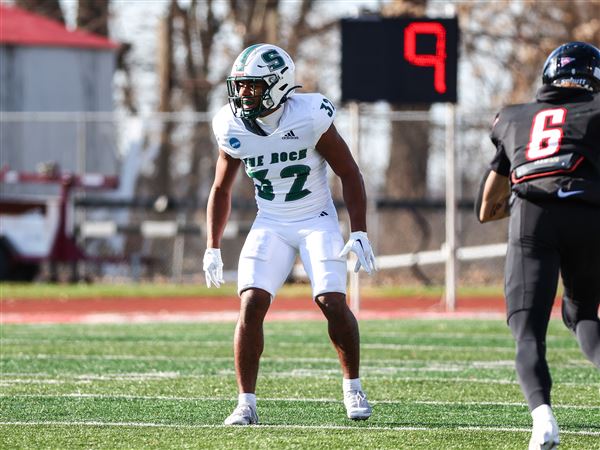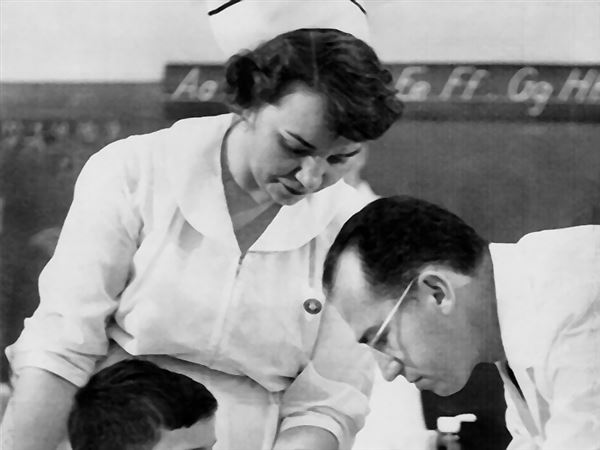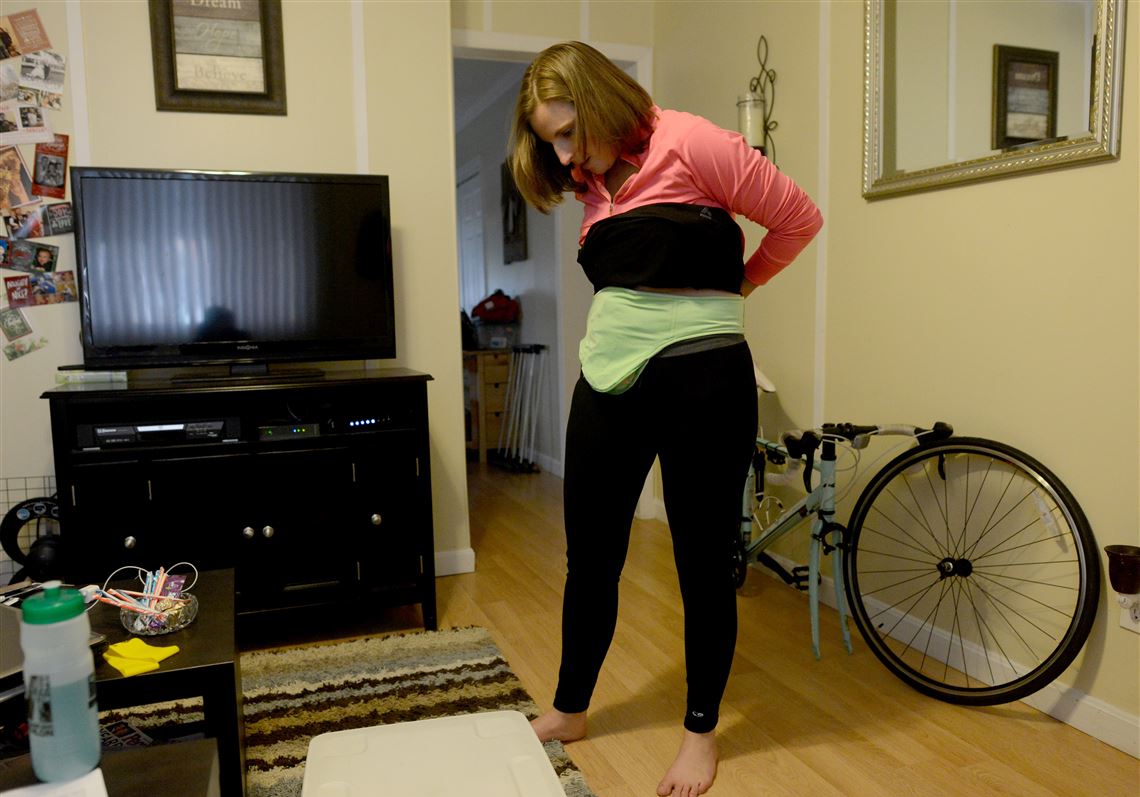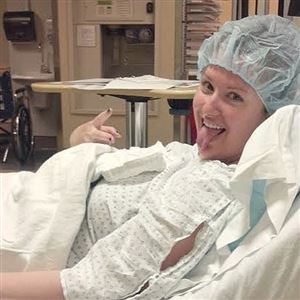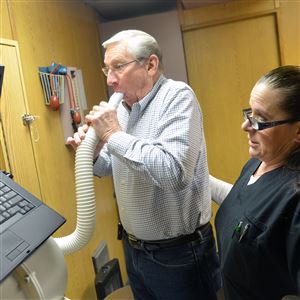(Third in a series.)
A love of running did not come naturally to Lauren Moran.
If anything, the Baldwin native considered moving her legs forward in anything faster than a slow crawl as punishment — and she was on both the soccer and track teams in high school.
“I hated to run,” says Ms. Moran, 34, of Bloomfield. “For me, it was always the worst part of sports.”
She held firm to that belief after graduating from Edinboro University with a communications degree in 2004, and her friends started signing up for weekend 5Ks. “I just never had an interest,” she says.
Even if she had, Ms. Moran’s body might have resisted. The summer after her freshman year in college, she was diagnosed with Crohn’s disease, a severe form of inflammatory bowel disease (IBD).
Ten years and three major surgeries later — the last of which left her with an ileostomy bag — Ms. Moran has turned her body’s betrayal into motivation. Looking to get healthy, she decided to train with a runner friend for the 2014 Great Race. Crossing the finish was such an emotional high that she ended up running a leg of the 2015 Pittsburgh Marathon Relay. She’ll be on a relay team again this year with family members May 1, helping to raise awareness of Crohn’s.
Her friend and mentor, Emily Winn, is running the full marathon to raise money for the Crohn’s & Colitis Foundation of America in her honor.
“It’s come full circle,” says Ms. Moran, associate director of alumni relations at Duquesne University. “I’m in a whole new place because of running. My body can do different things.”
Learning to cope
There’s no one test that identifies Crohn’s disease with certainty; its symptoms “fit” a number of GI disorders, including celiac disease, ulcerative colitis and irritable bowel syndrome.
While no one knows for sure what causes Crohn’s, heredity and a malfunctioning immune system are thought to play a role. Stress and diet can aggravate the symptoms, which include diarrhea, abdominal pain and fatigue.
It wasn’t until her weight plummeted 15 pounds that Ms. Moran’s mother insisted she see a doctor. A “million” tests later, she was finally diagnosed.
Named after the physician who first described the disease in 1932, Crohn’s can affect any part of the gastrointestinal tract, That means its severity and symptoms can vary from patient to patient. A chronic disease, it can develop at any age for the estimated 700,000 Americans who have it, although it’s most common between the ages of 15 and 35.
Ms. Moran didn’t think her diagnosis was a big deal; this was the era before smart phones and computers, so information was hard to come by. “I couldn’t understand why my mom was so upset,” she recalls.
Doctors advised watching her diet to see what foods triggered symptoms and started her on medication. By the end of her junior year, she was getting Remicade infusions every six weeks, but she got worse instead of better. In 2006, while a grad student at Bowling Green State University in Ohio, she had to have surgery to remove about 12 inches of her large intestine.
Recovery was tough but within a few weeks she was well enough to take a job in Florida. With maintenance drugs, she stayed healthy for the next few years. “I thought, ’This is great!’” she says.
One step forward, two steps back
Only it wasn’t. By 2013, the flare-ups were bad enough that simply willing herself to get through the day didn’t cut it. Realizing another surgery was likely, she decided to move back to Pittsburgh to be close to family. Three months after starting her new job at Duquesne University, she was in so much pain she couldn’t sit. Once again she went under the knife.
When she woke up from the 11-hour surgery, she had a colostomy. In addition to the physical recovery, Ms. Moran faced the emotional burden of dealing with a colostomy bag. It was a huge hit to her self esteem.
What if it leaked? Would she smell? How often would she have to empty it, and what if her stoma (the opening on her belly) made a funny noise? How would she wear a bathing suit? And what would it mean for dating?
“There’s so much stigma around it,” she says.
Yet Ms. Moran kept her concerns to herself. As Ms. Winn, 27, of Lawrenceville, notes, ”She’s not the type of person to complain.”
Which is how she came to start running six months after the surgery. Finally feeling good and able to eat different foods again, Ms. Moran realized it was time to get some exercise if she didn’t want to pack on the weight. Ms. Winn had just run the 2014 Pittsburgh Half Marathon and was bugging her to start running with her. With some trepidation, she agreed to train for the Great Race that fall.
Exercise might seem like a bad idea for someone with major stomach issues, but according to several studies, regular workouts can lead to less fatigue and alleviate some symptoms of IBD.
At first, she couldn’t even log a mile along the North Shore and would only run solo. “But Emily kept pushing me and after about a month, I was able to meet her in the Strip District for runs.”
She slowly improved, and that September, with a running belt keeping her stoma bag in place, she ran the Great Race 10K. Tears flowed when she crossed the finish.
“It was such an emotional year, and I never thought I could run,” she says. “It was a huge accomplishment.”
One more challenge
While a stoma is insensitive to pain, the race left her with some bad bruising around the colostomy site and a sore belly. Later that fall, doctors gave her devastating news. the rest of her colon would have to come out.
“I’d come so far that year, and felt healthy,” she recalls. ”I couldn’t believe I had to go through this again.”
In January 2015, surgeons converted her colostomy to an ileostomy, an operation in which doctors make an opening in the lowest part of the small intestine and bring it outside the body. They also removed her rectum.
Recovery was extremely hard, but what kept her going was wanting to run again. “Lauren is not the type to dwell on the bad stuff. She always wants to enjoy the moment,” says David Doyle, a friend since high school.
A month out, she could walk 10 steps. By March, she was jogging again, with a new goal: Running the last leg of the 2015 Pittsburgh Marathon relay. Not only did she finish, she gave it her all.
“It was awesome,” says Ms. Winn, who ran alongside her. ”I was exhausted but she was this little ball of energy.”
Ms. Moran had so much fun that she decided to train for a sprint-distance triathlon at North Park three months later. She’ll run the marathon relay again this year and is also gearing up for her first Olympic-distance triathlon this summer.
Her body has been through so much, but it’s also proven to be resilient, Ms. Moran says. She has to be careful about hydration. But running has played an integral role in her recovery. She hopes by going public with her disease, she’ll create hope for others.
“Other college students will go through this,” she says. “I want them to know they can still lead a healthy life.”
She’s even come to appreciate her stoma.
“How can something that keeps me alive not be beautiful?” she asks.
Gretchen McKay: gmckay@post-gazette.com, 412-263-1419 or on Twitter @gtmckay.
First Published: April 5, 2016, 4:00 a.m.


